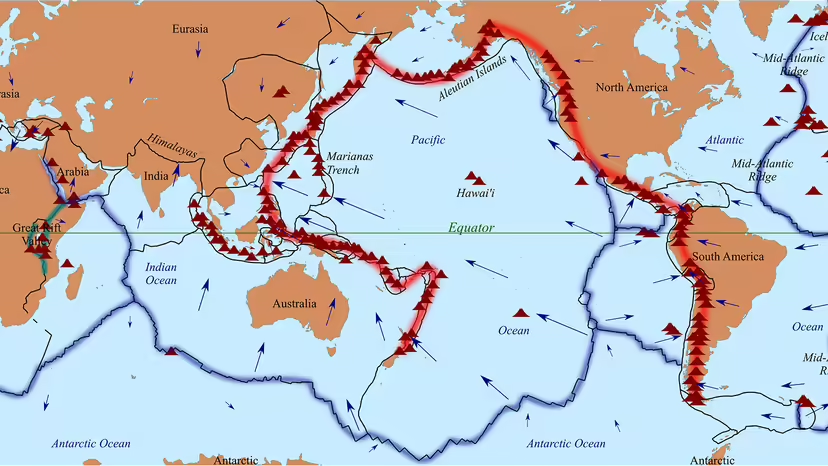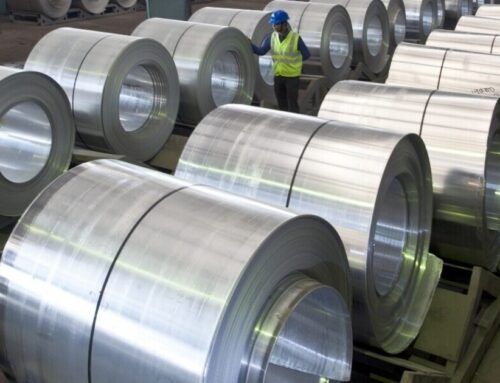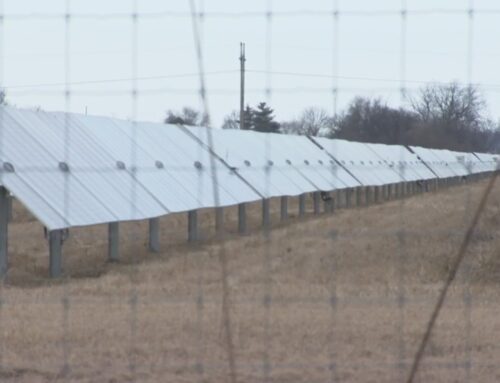Maritime Renewable Energy: Unlocking the Ocean’s Power for a Clean Future
May 9, 2025
The Untapped Potential of Ocean Energy
As the Earth is 70% ocean and sea by surface, it is no surprise that a lot of the Earth’s resources are found offshore. However, this is an inherently more difficult environment for a land-based creature like humans. As a result, ocean energy has so far been poorly harvested, mostly limited to offshore oil & gas exploitation and offshore wind farms.
But there is a lot more potential for energy generation at sea in other forms. From the almost unlimited surface areas to tides, waves, and the differential of height and temperature, scientists all over the world are working on finding new ways to tap into renewable energy from the endless waves.
And this could be a massive source of new renewable energy, with 2050 potentially seeing 352 GW of installed capacity, or close to the current entire global nuclear park (399 GW).

Source: IRENA
Why Ocean Energy Development Has Been Slow
It might surprise you that energy production in the ocean started only a few decades ago, while other forms of energy, from hydropower to onshore fossil fuel production, are centuries old.
A key reason is that it is obviously easier to build on land. Seas and oceans, by contrast, require any infrastructure to be floating and/or anchored to the bottom of the seafloor, adding costs and engineering constraints. Regular storms, or even hurricanes in tropical areas, add to the difficulty of creating structures that can survive the oceans.
Another key factor is sea salt. The salinity of the ocean makes seawater extremely corrosive for metallic components, including energy generation systems like turbines. This requires applying a complex array of custom solutions of coating, oils, and other protective measures to avoid having energy infrastructure eaten away by corrosion. The growth of damaging sea organisms like algae and seashells (“biofouling”) can also contribute to damage at sea, with the organic material clogging and covering the machines.

Source: ResearchGate
Lastly, while vast, the oceans’ latent energy is also very diffuse. On land, geology and geography tend to concentrate naturally the resources in mineral deposits, rivers, and wind corridors, something the flat surface of the ocean does not provide.
Offshore Wind Power: Scaling Up at Sea
As with virtually every sea-based energy platform, offshore wind tends to be more capital-intensive. Distance from inhabited areas and saltwater corrosion also increase maintenance costs and can reduce the lifespan of the wind turbine and its components.
There are, however, quite a few advantages to offshore wind as well:
- More efficient production: offshore winds are more stable, more powerful, and more frequently blowing than on land.
- This leads not only to more production but also to a more predictable one, closer to baseload power production than the more intermittent onshore wind generation.
- In many regions, offshore wind picks up in the afternoon and evening, when the demand is at a maximum.
- With most of the global population living near the coastline, offshore sites are often quite close to the consumers.
- A good wind site at sea can be a lot larger than onshore. This allows for more scale.
- Less environmental impact. By reducing land use and not disturbing the local ecosystem with access roads and traffic in remote areas, offshore wind can be more environmentally friendly than onshore wind.
- The restricted area of wind parks can even help marine ecosystems.
- Less opposition: the distance to the population centers and from sight limit greatly limits the opposition to wind projects when they are offshore. The NIMBY (Not In My Back Yard) reactions are that much less impactful.
Depending on the depth, different anchors can be used for offshore wind turbines.

Source: DoE
As wind technology progresses, a new option is not to build a giant pillar for a giant turbine, but an even bigger “wall of turbines”. Some units are in development for 40MW models and could reach as much as 126MW.
Such a system would be most fit for areas with very strong and almost constant winds, like the North Sea.

Source: Recharge News
Concentration of offshore wind projects into megaprojects, like the 10GW North Sea Energy Island considered by industry’s giant Orsted, is likely going to be a dominant trend in the future, as it reduces maintenance and installation costs by sharing it over more wind turbines.
Offshore wind is likely to stay the main non-fossil fuel source of maritime energy in the decade to come, thanks to the abundant wind energy at sea and the technology being already quite mature.
Some analysts estimate offshore wind could be 12x larger by 2040, with the 2030s seeing a lot of new floating types of wind turbines being installed.

Source: Rystad Energy
(You can read more about wind power’s potential in our dedicated report “Can Wind Power The World?”)
Tidal Power: Predictable Renewable Energy from the Moon
Despite wind being the dominant form of maritime energy, it is actual tidal power that is the most ancient. This is the harvesting of the energy generated by the Moon’s gravity which create the rise and fall of sea level with the tide.
Tidal Power 101
This was initially harvested with a water mill using the movement of the sea, instead of a river, to turn the mill’s wheel. The first large-scale tidal power station was built in 1966, with the 240MW Rance Tidal Power Station, in Brittany, in Northwestern France.

Source: Dialogue Earth
A key advantage of tidal power is that it is extremely stable and predictable, allowing for very reliable baseload renewable power. It also produces at night and in winter without any decline, making it a good complement to solar energy.
However, this is a difficult way to harvest energy. It usually requires being located in a high-tide region or with a strong current channeling the tide into a narrow strait. This has historically limited the potential sites for this form of energy. It also means that, in most cases, it requires the building of a tidal barrage.
The rarity of tidal projects has hindered the sector, as it removes possible economy of scale from mass manufacturing, replacing it with custom solutions requiring expensive design.
“We are at the point where we’re demonstrating the technology reliably, and we’re scaling it up to commercial utility scale. What we’ve got to do is look at relatively small projects, just to demonstrate that the technology is reliable, overcoming environmental hurdles, and also build momentum and the scale we need.”
Seumas Mackenzie – Chief operating officer for tidal developer Nova Innovation
To this day, there are plenty of designs considered, but none that are mass-manufactured.

Source: IRENA
The requirement for the turbines to be constantly moving in seawater also increases the difficulties from corrosion and biofouling.
Overall, it is unlikely that tidal power will soon become a major energy contributor to our power grid.
However, it can be a very good solution for isolated islands and coastal regions, as demonstrated by pilot projects in the Shetland and the Orkney Islands. These islands require either a costly grid connection or fossil fuel imports.
Harnessing Ocean Currents for Renewable Energy
Exploiting deep sea currents, which move a tremendous amount of water steadily, could provide a very powerful energy source, even greater than tidal power, is also a theoretical possibility for now.

Source: Energy Encyclopedia
However, the extreme depth and distance from shores for installing such facilities, as well as the potential risk of disrupting these currents, which are very important for climate regulation, do not make it a realistic possibility in the foreseeable future.
However, less powerful but closer to shore currents could maybe form a more realistic option for this concept.
Wave Power: Turning Ocean Swells into Electricity
Even more omnipresent than tides, waves are a natural part of the ocean and a theoretically unlimited source of energy, making up almost half of the ocean’s energy potential (excluding wind).

Source: IRENA
Here too, many designs are still being considered, with none having demonstrated a clear superiority to the other or being mass manufactured. Overall, the idea is either to harvest energy through the rise up and down of the water level, or the oscillation of the buoy, or through the rotation of a buoy.

Source: IRENA
While even lower in technological readiness than tidal power, wave energy could be a major contributor of energy by 2040, with the European Union envisioning 1 gigawatt of ocean-derived output by 2030, and 40 gigawatts by 2040.
“Wave energy devices need to be designed to withstand and survive storm conditions, and that could be a major concern in a warming world where storms are increasingly more extreme.
There’s a lot of wave energy out there, but it’s certainly more expensive and technically difficult to exploit.”
Conchúr Ó Brádaigh – Vice president of the Faculty of Engineering at the University of Sheffield
This will be an energy solution highly dependent on local wave size, with some regions more likely to make sense than others. The North Atlantic, North Pacific, and South of Australia seem the best candidates.

Source: ResearchGate
Ocean Thermal Energy: Tapping the Heat Below
(OTEC) takes advantage of the temperature difference between warm surface water and much colder water at depth. A thermal gradient like this one is theoretically very powerful for energy generation.

Source: Britannica
To be economically practical, the temperature differential should be at least 20 °C (36 °F) in the first 1,000 metres (about 3,300 feet) below the surface.
Because the greater the gradient, the more energy generation potential and the lower the costs, this is likely a better solution for warm tropical waters combined with quickly falling sea floors, notably South-East Asia and off the coasts of Mexico and Brazil.

Source: Ocean Energy Systems
OTEC facilities can be either onshore (with pipes going into the ocean) or floating. While floating surfaces have a lot more potential sites, they are going to be more expensive to build and maintain. Offshore energy production would need to be sent back onshore, either through power cables or through in-situ production of hydrogen, methanol, or ammonia that is shipped back to population centers.
A potentially positive side effect of OTEC could also be bringing to the surface nutrient-rich deep waters. This could be utilized for environmentally friendly marine aquaculture and even help capture carbon through phytoplankton growth.
Floating Solar Farms: Maximizing Sea Surface for Clean Energy
Besides using the energy of the oceans themselves, the seas provide us with another abundant resource: surface area.
Contrary to land, which is often used for farms or natural habitats, and relatively expensive per square meter, most of the sea surface is relatively unproductive, especially in high-solar-radiation tropical areas.
There are also no neighbors or people offended by the aesthetic aspect of these offshore solar fields. This makes the possibility of offshore floating solar fields an attractive one.

Source: RWE
In addition, the reflection of sunlight by the sea surface increases the total insulation. This phenomenon could maybe be even leveraged for more energy generation thanks to bifacial solar panels.
The relatively cold water also helps keep the panels cool, which improves their durability and maximum yield.
Several other countries, from Africa, the Caribbean, South America, and Central Asia, could fulfill anywhere between 40 and 70% of their annual electricity demand by deploying FPVs. Even developed countries like Finland and Denmark could draw 17% and 7% of their annual demand, respectively, from such sources.
There are however a few risks associated with this solar farm design.
The first challenge is the presence of salt. Not only can this cause the usual corrosion risks on sensitive electrical systems and support structures, but deposits of salt crystals from sea spray can accumulate on the panels, reducing their photoelectric conversion efficiency. A potential solution can be to locate the solar panel platform higher above sea level, as in the pilot project Yellow Sea No. 1 by the Chinese developer Huaneng Group.

Source: Daily Galaxy
Another potential issue is storms and hurricanes, which can destroy floating solar facilities much before they even manage to “pay back” the energy required to build them.
So overall, instead of the structure directly floating on the water like in a freshwater lake, sea-bound solar plants are maybe more likely to be mounted on floating platforms not dissimilar to mini-oil rigs.
Deep-Sea Geothermal Energy: A Future Frontier
Only at a theoretical stage, this is a form of energy that in the very long term could be an important one for many countries, especially the ones located along the so-called “Ring of Fire” around the Pacific Ocean.

Source: HowStuffWorks
As the oceanic crust is a lot thinner than the continental one (4 miles thin instead of 10-43 miles), very hot temperatures can be reached with less deep drilling.

Source: GeologyIn
To tap this potential energy will require further progress in geothermal energy, a topic we discussed in detail in “Geothermal Power: Green Energy That is Red-Hot”.
It is likely that the final form of this energy source will be the combination of ultra-deep sea drilling (currently used for oil production) and open or closed-loop geothermal energy generation.

Source: BGS
Uranium from Seawater: A New Nuclear Fuel Source
Besides wind, sun, tides, and waves, the ocean could also be a source of low-carbon energy in a surprising way: by being the largest uranium mine on the planet.
Seawater contains traces of dissolved uranium, and the sheer volume of the ocean means that any efficient process to extract this resource would turn it into a virtually unlimited supply of radioactive fuel, with as much as 4.5 billion tons, nearly 1000 times larger than terrestrial uranium reserves.
We wrote recently that a technical breakthrough using treated carbon fiber fabric with enough surface area to capture uranium ions could allow for uranium harvesting through an electrochemical reaction.
Combined with floating nuclear power plants, with a model already run by Russia and prototypes experimented on by companies like Danish Saltfoss, this could make the oceans the future of nuclear power.

Source: Saltfoss
Algal Biofuels: Growing Energy from the Ocean
Lastly, a way for the sea to directly produce energy could be by harvesting the growth of microalgae to produce biofuels and other biomaterials like plastics.
By using seawater, algal biofuel can solve the problem of water supply to biofuel facilities, with the best areas being semi-desertic regions with a lot of sunlight, but limited resources of freshwater.
To become commercially viable, this technology will need to keep optimizing the yield of the algae, manage well the risk of contaminations of the cultures, and improve the efficiency of the conversion into usable fuels like biodiesel.
Hydrogen, Ammonia, And Methanol
Seawater could also be a source of feedstock for hydrogen production, notably through electrolysis. In general, the production of hydrogen from seawater can be problematic, as salt can damage the electrocatalysts. So ideally, the seawater needs to be turned into freshwater first, through desalination.
The processes of energy production, desalination, and electrocatalysis could be merged together as we recently discussed about a design merging together solar panel, desalination via evaporation, and local hydrogen production.

Source: Energy & Environmental Science
The produced hydrogen could then be turned into ammonia or methanol for easier storage and transportation of the green fuel.
Producing Hydrogen and Green Fuels from Seawater
Desalination with Solar: Greener Freshwater Solutions
Besides producing energy directly from the ocean, the seas could also help to replace activities that are currently massive consumers of energy, resulting in lower emissions.
The first one is the aforementioned desalination, which is becoming a crucial source of freshwater for many countries. Improved desalination methods using direct sunlight hitting the ocean could reduce the energy demand for freshwater production.
Seawater Cooling Systems: Efficient Coastal Air Conditioning
This concept is similar to Ocean Thermal Energy Conversion (OTEC) in that it leverages the much cooler temperature to deep waters. However, it can be a lot more efficient as it does not require conversion into electricity, but simply use the cold water as a coolant in air conditioning systems.

Source: Solar Impulse
This system can save about 42% of energy compared to a conventional AC system (2,6km of piping into the ocean to reach a 930m deep area).
Flagship experimental projects include ENGIE’s 20MW Thassalia and EDF’s 21MW Massileo projects.
The limit of this system is that it requires a pre-established, centralized air conditioning system to be connected to. It also requires the coastal area to have sufficiently steep seafloor so that the required depth can be reached with a short enough pipe.
Underwater Energy Storage: Pumped Hydro and Gravity Batteries
Deep Sea Pumped Hydro Storage
Another option to use the sea for energy is to use it like a battery.
The first method to do so is deep-sea pumped hydro storage. It is a similar system to pumped hydro storage using dams and mountains, but leverages the ocean depth instead.

Source: Department of Energy
This could solve a major problem of pumped hydro storage, which is the lack of available sites of a sufficient size to scale up the technology. This is an unfortunate problem, as hydro storage is a proven and scalable technology that can store energy for weeks or months with little loss, and has a remarkable storage efficiency of 70-80%.
A pilot project is exploring this idea: StEnSea, or “Stored Energy in the Sea”.
A series of hollow concrete spheres on the seabed at depths of 600 to 800 meters, where the pressure is already considerable.

Source: Clean Technica
When electricity demand is low, these spheres are emptied of water using electric pumps, storing the surplus electricity. When demand rises, they are refilling, with the pressure providing the energy.

Source: Fraunhofer Institute
These systems could be deployed together with offshore wind farms, allowing them to buffer the intermittent wind’s energy production while utilizing the same power cable for transmitting the energy back to the shore.
The techno-economic assessment shows that the StEnSea system is cost competitive with conventional pumped hydro energy storage (PHES).
Another advantage is the modular setup that is achieved by combining several StEnSea units into a plant. This increases the flexibility of the plant and therefore the range of possible applications.
Ocean Gravity Batteries: Storing Power with Depth
A similar idea to using the depth of the ocean is to build offshore gravity batteries. Gravity battery is a concept among other we discussed in “Non-Chemical Alternatives To Batteries For The Energy Transition“: ultra-heavy objects like rock, concrete blocks, or iron ore aggregate, are raised up and down to store or generate electricity.
The key components of gravity batteries are also rather simple and already mass-produced: anchors, metal cables, alternators, and electric motors. Gravity batteries have an energy storage efficiency of 80-85%, and can last up to 50 years, using no rare materials or metals. Power generation can also be very flexible, reactive, and long-lasting.
The limitation of “solid energy storage” with gravity is that the energy stored at just a few tens or hundreds of meters is not that large. So you ideally need a lot of it, and as long as a mine shaft or cliff, if possible.
A floating platform could stand above an area with a deep sea floor, and lower or raise a weight over several thousand meters. This concept is called Deep Ocean Gravitational Energy Storage (DOGES). One company working on this concept is the French startup Sink Float Solutions.
“Currently, offshore cranes with the largest load capacity can lift masses of 4000 tons, which, for a vertical speed of 20 km/h, would correspond to a power of 200 MW. Several winches on the same site can be used in parallel.”
An advantage of this method is that the parts exposed to sea water can be very simple, just metal cable and rock/concrete, leaving the sensitive electric and electronic component way above sea level in the floating platform.
Final Thoughts: Turning the Tide on Clean Energy
The seas and oceans of Earth are maybe the largest untapped energy resources available, from offshore wind to exploiting the deep water thermal gradient, tides, and waves. The same characteristics of seawater could also be used for desalination or cooling.
The sunlight hitting the sea could also be used for hydrogen or biofuel production, helping decarbonize hard-to-electrify sectors.
The oceans could also be a key source of resources or future energy production, with, for example, uranium purification from seawater and deep offshore geothermal energy.
Lastly, they could be a powerful and scalable option for energy storage, notably with gravity batteries and deep-sea pumped hydropower.
However, all of these possibilities are to be calculated with the very real difficulties created by salt corrosion, salt deposits, biofouling, and violent storms & hurricanes.
Paradoxically, solutions to these issues are likely to benefit greatly from the long-established experience of the oil&gas industry in building offshore platforms and maintaining complex and fragile machinery at sea.
Search
RECENT PRESS RELEASES
Related Post





